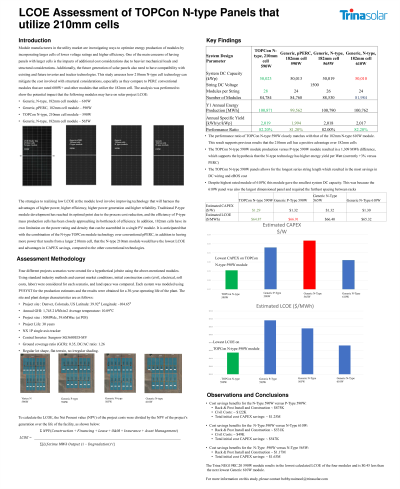Back

Finance and Asset Management
LCOE Assessment of TOPCon N-type panels that utilize 210mm cells
Tuesday, September 12, 2023
4:30 PM - 5:30 PM PDT
Location: Poster Area, Booth #11024, Level 1, Venetian Expo Hall


Bobby Naimool
Presales Engineering Manager
Trina Solar
WINTER GARDEN, Florida, United States
Poster Presenter(s)
Background, Description, Delivery and Learning Objective: Module technology in the utility market is headed towards larger cells that have lower voltage ratings and higher efficiency. One of the main concerns of having panels with larger cells is the impacts of additional cost considerations due to heavier mechanical loads and structural considerations. In addition, the future generation of solar panels also need to have compatibility with existing and future inverter and tracker technologies. This study will describe how N-type cell technology will address the structural concerns that are currently present in the industry, especially as they pertain to PERC conventional modules that are rated 600W+. In addition, key innovative technologies associated with TOPCon cells will be described, especially as they relate to CAPEX costs, BoS savings, and increases in energy yield. Finally, the levelized cost of energy will be summarized, and comparisons will be made alongside other conventional panels with P-type and N-type cells. This research will be geared towards plant owners and O&M personnel who want to understand the cost-benefit impacts of using panels with both 210mm cells and N-type technology.
